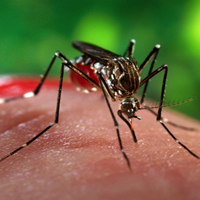The first detection of a population of Aedes aegypti in the Atlantic Forest in the state of Rio de Janeiro, Brazil

All claims expressed in this article are solely those of the authors and do not necessarily represent those of their affiliated organizations, or those of the publisher, the editors and the reviewers. Any product that may be evaluated in this article or claim that may be made by its manufacturer is not guaranteed or endorsed by the publisher.
Accepted: 2 October 2020
Authors
Aedes aegypti is almost completely restricted to human-modified environments, especially urban areas, and rarely invades forests. Ovitraps were utilized in a reserve (Bom Retiro) in Rio de Janeiro state. Eggs of A. aegypti, genetically not differentiable from those of urban mosquitoes, were obtained at a location more than 700 m inside the border of the forest and 900 m away from a trail at the entrance to the forest. The presence of A. aegypti in a primary forest indicates its ability to adapt to sylvatic environments in Brazil, suggesting great potential for the transmission of several arboviruses due to the difficulty in controlling these mosquitoes.
Supporting Agencies
Fundação de Amparo à Pesquisa do Estado do Rio de Janeiro, FAPERJ (26/010.001630/2014; E-26/202.819/2015) and Conselho Nacional de Desenvolvimento Científico e Tecnológico-CNPq (301345/2013-9).How to Cite
PAGEPress has chosen to apply the Creative Commons Attribution NonCommercial 4.0 International License (CC BY-NC 4.0) to all manuscripts to be published.







